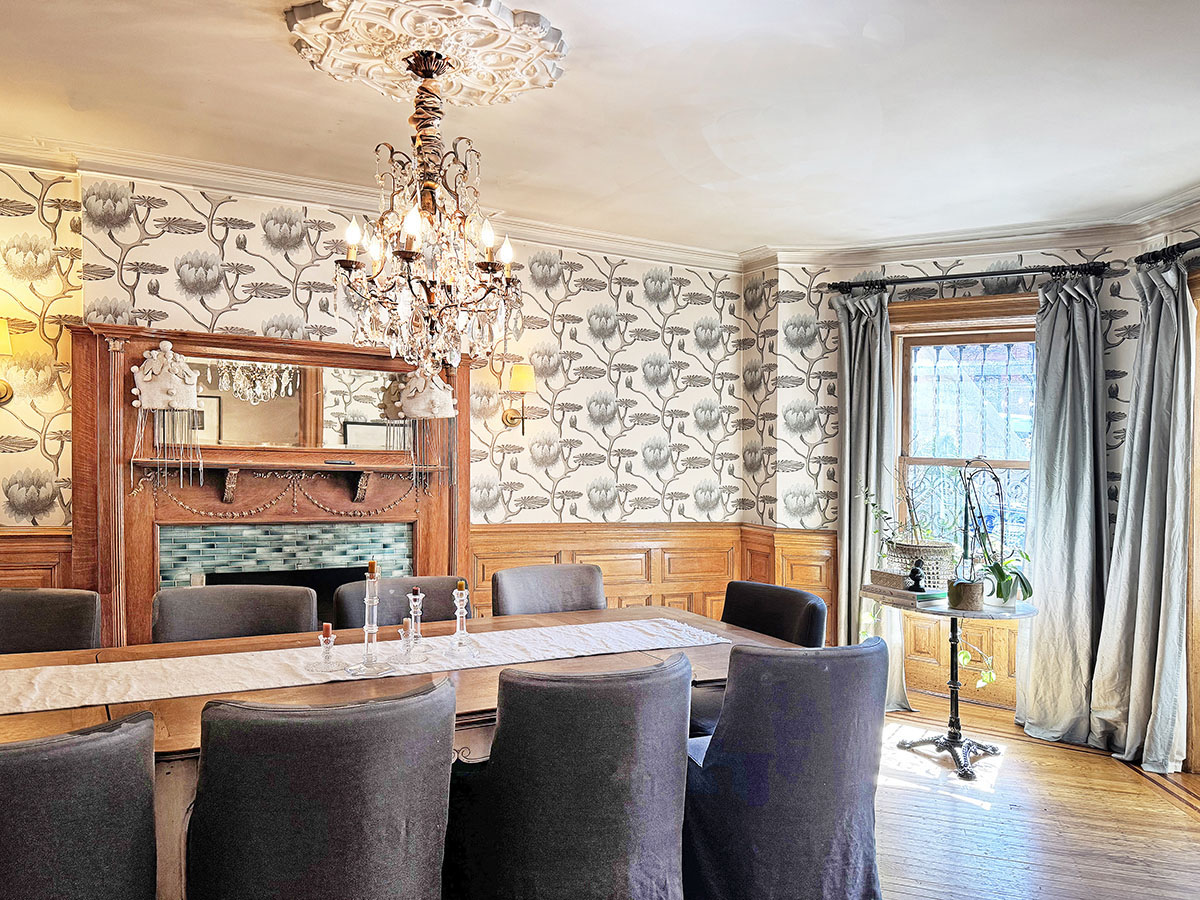Admiral's Row: Up Close and Personal
Over the weekend, Gothamist’s Jake Dobkin photographed the interior of the Admiral’s Row houses inside the Brooklyn Navy Yard. The shots are incredible so we encourage you to click on each one above to see the full-size version. We also thought the commentary he provided on his personal site, Bluejake, was worth repeating here: I…







Over the weekend, Gothamist’s Jake Dobkin photographed the interior of the Admiral’s Row houses inside the Brooklyn Navy Yard. The shots are incredible so we encourage you to click on each one above to see the full-size version. We also thought the commentary he provided on his personal site, Bluejake, was worth repeating here:
I was surprised how messed up these buildings were on the inside. The rear ends of many of the houses had collapsed, leaving a tangled mess of wood. Interior staircases were hanging a few feet off vertical, and large holes dotted many of the floors. Almost all of the windows were open or blown out, and the wind and rain had taken off most of the paint on the inside walls. Still– some romantic details were still extant– dozens of fireplaces and cedar-lined closets, handsome plaster work and ornamental detailing, and one enormous, empty ballroom. It’d be a shame if we let these buildings get demolished. I know the neighborhood needs a supermarket and more jobs, but there’s got to be a way to bring that stuff without destroying the past.
There’s also a related post on Gothamist from Monday. Incredible. Wish we could take photos like these.
Admiral’s Row Photos [Bluejake]
Inside Admiral’s Row [Gothamist]
Admiral’s Row Archives [Brownstoner]





I give up.
I guess I’m a 9 year old, Sam, because I see the possibility of saving at least the ones that aren’t as far gone. I also see the viablility of adaptive reuse. Most preservationists are not going to quibble over having to have handicapped entrances, or being up to code. Projects far older than this are adapted for tourists and adaptive reuse all across Europe, Asia, the Middle East. If they can put a ramp on a frigging pyramid, or get a Norman castle up to code for tourists, I would think we could manage to fix up a couple of mid 19th century brick houses.
I also disagree on their visibility. From a car, or across the street, even in the middle of summer with all of the vines and vegetation, those houses are quite visible, like seeing ruins in a jungle. I can’t think of a trip in a cab, or with friends where someone hasn’t commented on the houses. They are too big to miss.
Darth Vader?
I’ve been revealed!!
MM, for once I disagree with you. First of all the houses may be on Flushing Avenue, but they can barely be seen. Some are behind a tall brick fence and the rest are entirely covered in vegetation worthy of the rain forest. secondly, the Pratt designs are very nice, very green, very trendy, but utterly impractical. As someone who has tried to adapt old buildings, let me assure you that the DOB will throw every possible roadblock in your direction from seismic codes to handicap codes to egress codes. These old buildings break every single modern building code imaginable. So if you can stay under the radar, keep old houses as houses and not try to rebuild them too much or convert them to other uses, you will be OK. These buildings? Forget it, the codes will kill you if you try to turn them into public uses. The fantasy is to preserve them as quaint Mom and Pop stores or Bed and Breakfast, alas cruel reality, in the forms of codes and economics, make this fantasy unlikely to be anything but a dream.
These houses are toast, a ten-year-old can tell you that. Can you build replicas? sure! But why? Are we lacking nineteenth century houses in Brooklyn?
Nay, Mr. Snark- i belong to you forever. Although i must admit the darth vaderish personality of benson has a certain perverse appeal, I find that you are someone I could twirl a waxed moustache and a sneer with happily (although I sadly admit I do not have a moustache, waxed or otherwise).
MM- beautifully put, as always.
Sam, I don’t remember if you were around for other discussions on this, but there IS a plan, there are a couple of plans floating around. No one expects anyone to restore these buildings so they can stand around and look good. Last year, an architectural team from Pratt proposed a multipurpose usage of the space, incorporating the entire Row, as well as a supermarket. Other plans, perhaps less professionally rendered, have been put forth. I put forth an idea of function in my post above, there is no lack of ideas out there.
Using these buildings as housing has never been in the mix, and it doesn’t make sense to do so, mostly because we’re not talking about very much housing, so it’s not worth it, and it’s on gov’t land, and not accessible to the general public.
Perhaps if these houses had been in the interior of the Yard, the general public would never have known about them, and they would have been bulldozed without a footnote. But they are there for all to see on Flushing Avenue, reminding us that we still have a long way to go in learning to preserve the best of our heritage. Let’s save at least some of them. Because they are “historic”. Because they can be repurposed and incorporated into something bigger and better for the entire city, and because if we don’t, and they collapse upon themselves, we will have lost them forever. These houses may be country cousins to the grandeur of Penn Station, the original Madison Square Garden, and countless other buildings in this city, but they would all share the dubious distinction of being only a photograph and a memory.
The front entry doors are exactly what I need to replace the ones that were removed from my place year ago per the tax photos (don’t know if the dimensions would match). They’re probably too far gone to salvage, but who knows. The stair ballustrades and newel post are the same as my place as well. Maybe they were manufactured at the same time/by the same company (circa early 1860s…)?
i call b.s.
you “can’t save every building” is flat out an extremist statement used to justify not saving any building. recent example? the tip-top bread factory at atlantic yards. couldhave easily been incorporated into any project. just less money for the developer.
a really creative community wouldnt have to kill the houses to have a freaking grocery store. anyone want to do a layout ofthe area?
why not put an underground market under commodore barry park?
> “I feel like I’ve come over to the dark side.”
I’d rather you stay on the snark side.
Even if the city spent millions of dollars to rebuild and recreate these homes as they once were, what then? What could they sensibly be used for? No one has any idea.
In order for a building to be preserved, it needs a function. If these were on private property they would have been bought up and restored to residential use about fifteen years ago. But they are on government land, zoned industrial no less!
The Navy Yard has enough on its hands. They need figure out what to do with the landmarked naval hopital and surgeon’s house which are in much better shape but vacant and following the same path as these abandoned hulks. These houses are not even landmarked. Why keep beating a dead horse? or house, in this case.